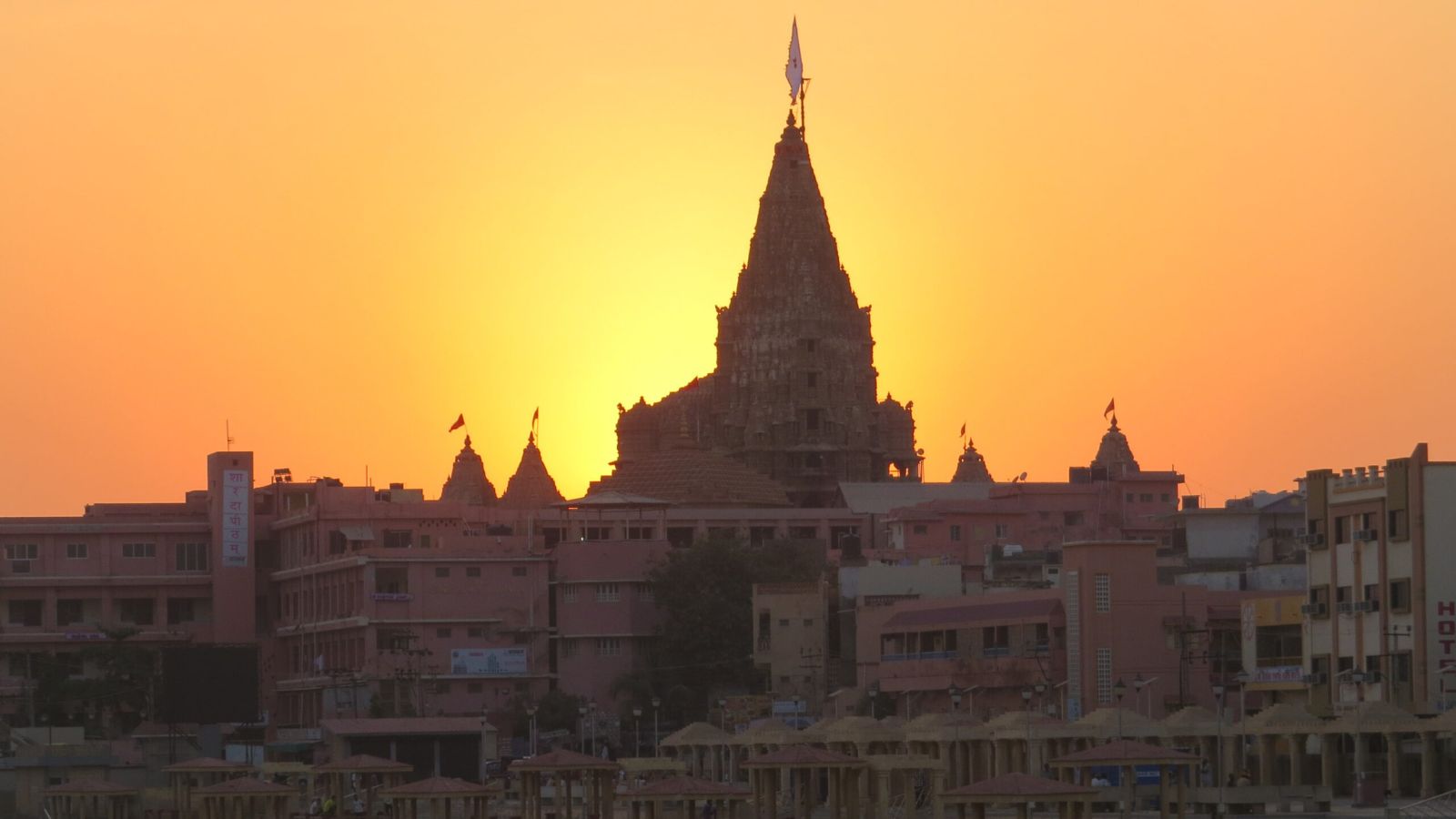
The Dwarkadhish Temple, also known as the Jagat Mandir, stands as a magnificent testament to India’s spiritual heritage and architectural brilliance. Located in the sacred city of Dwarka in Gujarat, this temple is one of the four sacred Char Dham pilgrimage sites. Dedicated to Lord Krishna, revered here as Dwarkadhish or the “King of Dwarka,” the temple attracts millions of devotees and tourists every year.
With its imposing structure, intricate carvings, and rich history, the Dwarkadhish Temple is not just a place of worship but a gateway to spiritual enlightenment.
Historical Significance of Dwarkadhish Temple
The Shree Dwarkadhish Temple boasts a history that dates back over 2,000 years. According to Hindu mythology, Lord Krishna established the city of Dwarka after leaving Mathura. This temple was later constructed to honor him. Historical records suggest that the original temple was built by Vajranabh, Krishna’s great-grandson. Over centuries, the temple has been renovated and restored by various dynasties, including the Solankis and the Mughals.
Its resilience against invasions and natural calamities reflects the unwavering devotion of its followers and its significance in India’s cultural and spiritual fabric.
Architectural Marvel of Shree Dwarkadhish Temple
The Dwarkadhish Temple is a masterpiece of Chalukya-style architecture, standing 51.8 meters tall. Its five-story structure, supported by 72 intricately carved pillars, symbolizes ancient Hindu architectural brilliance. The main shrine, or sanctum sanctorum, houses the idol of Lord Krishna, which is adorned with elaborate ornaments and vibrant clothing, reflecting his royal persona.
Key Architectural Features
- Shikhar (Spire): The temple’s towering shikhar is adorned with a massive flag, believed to symbolize Krishna’s rule. The flag is changed five times a day, a ritual of immense significance.
- Entry Gates: The temple has two prominent gates:
- Swarg Dwar (Gate to Heaven): Leads to the Gomti River.
- Moksha Dwar (Gate to Liberation): Opens towards the city.
- Intricate Carvings: The walls and ceilings are adorned with detailed carvings depicting stories from the Mahabharata and Bhagavad Gita, offering visitors a visual journey through Krishna’s life.
Religious Importance of Dwarkadhish Temple
The Shree Dwarkadhish Temple holds immense religious significance in Hinduism. It is one of the Char Dham, the four sacred pilgrimage sites that every devout Hindu aspires to visit. The temple is also part of the Sapta Puri, seven sacred cities in Hindu tradition.
Devotees believe that visiting this temple and taking a dip in the Gomti River washes away sins and leads to salvation. The temple’s rituals, including the Mangla Aarti in the early morning and Shayan Aarti in the evening, provide a deeply spiritual experience.
Festivals Celebrated at Dwarkadhish Temple
Janmashtami
The most significant festival celebrated at the Dwarkadhish Temple is Janmashtami, the birth anniversary of Lord Krishna. The temple comes alive with vibrant decorations, devotional songs, and performances depicting Krishna’s life. Thousands of devotees gather to witness the midnight celebration, which marks Krishna’s birth.
Holika Dahan and Holi
During Holi, the temple resonates with colors and joy, reflecting Krishna’s playful nature. Devotees participate in grand celebrations that include singing, dancing, and applying colors.
Diwali
Diwali at the Dwarkadhish Temple is marked by elaborate decorations and special rituals to honor Lord Krishna and Goddess Lakshmi. The temple is illuminated with lamps, creating a mesmerizing sight.
How to Reach the Dwarkadhish Temple
By Air
The nearest airport to Dwarka is Jamnagar Airport, approximately 137 km away. From there, taxis and buses are readily available.
By Train
Dwarka has its own railway station, well-connected to major cities like Ahmedabad, Rajkot, and Mumbai.
By Road
Dwarka is accessible via a network of state and private buses. The NH 947 connects Dwarka to nearby cities.
Places to Visit Around Dwarkadhish Temple
- Rukmini Devi Temple: Dedicated to Krishna’s consort, this temple showcases stunning architecture and is a must-visit.
- Bet Dwarka: Believed to be Lord Krishna’s residence, this island is accessible via a ferry ride.
- Gomti Ghat: Located near the temple, this sacred ghat is ideal for performing rituals and taking a holy dip.
- Nageshwar Jyotirlinga: One of the twelve Jyotirlingas, this temple is a significant pilgrimage spot near Dwarka.
Tips for Visiting Dwarkadhish Temple
- Dress Code: Traditional attire is recommended as a mark of respect.
- Timing: The temple is open from 6:30 AM to 1:00 PM and 5:00 PM to 9:30 PM.
- Photography: Photography is prohibited inside the temple premises.
Conclusion
The Shree Dwarkadhish Temple is more than a sacred site; it is a beacon of faith, culture, and history. Its majestic architecture, profound spiritual significance, and vibrant festivals make it a destination worth visiting for anyone seeking a deeper connection to India’s rich heritage.